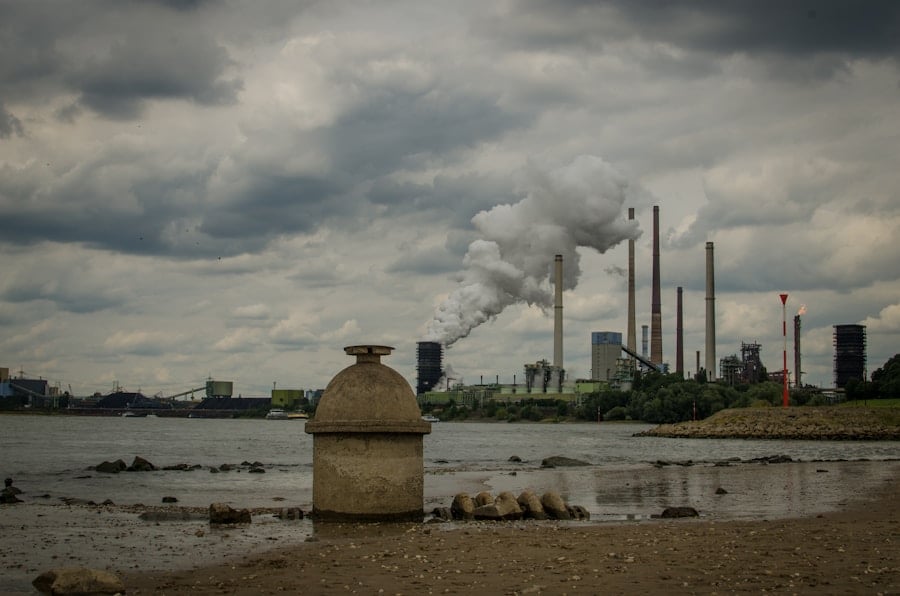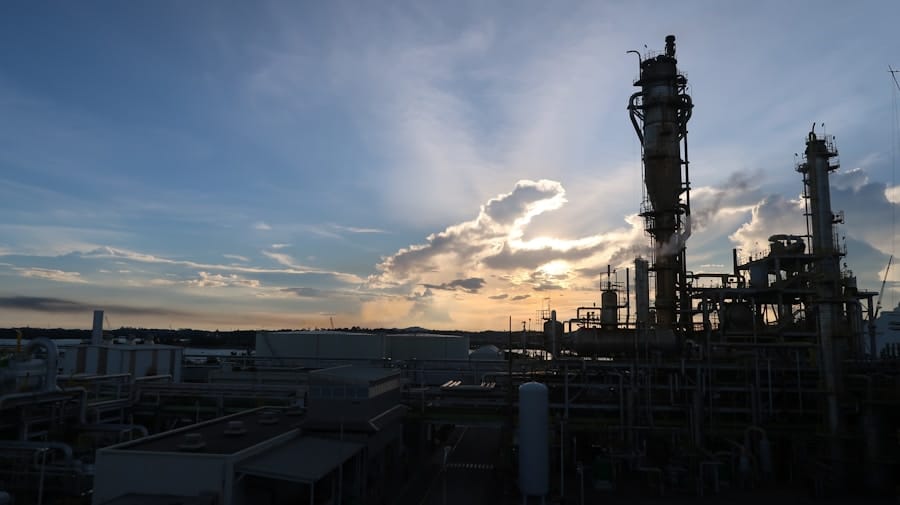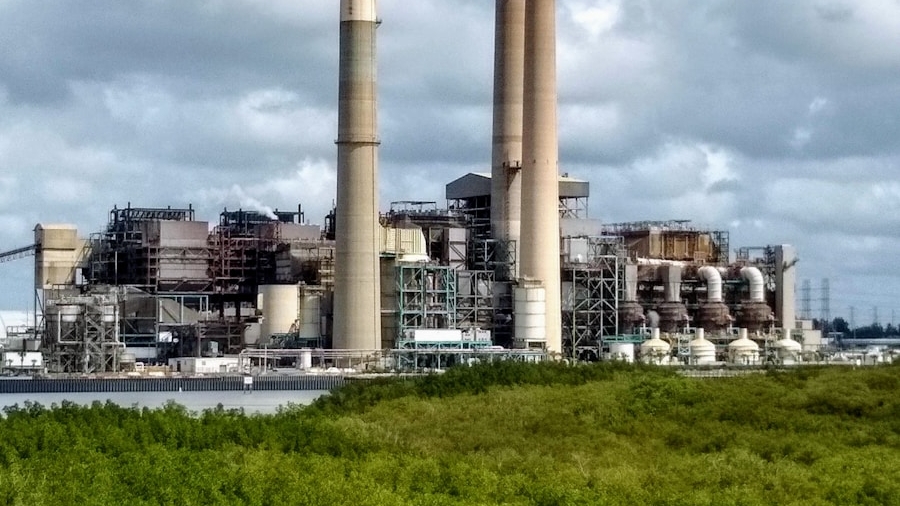Artificial Intelligence (AI) is increasingly becoming a pivotal player in the realm of carbon capture technologies, which are essential for mitigating climate change. Carbon capture and storage (CCS) involves capturing carbon dioxide emissions from sources like power plants and industrial processes, preventing them from entering the atmosphere. AI enhances this process by optimizing various stages, from the capture of CO2 to its transportation and storage.
By employing machine learning algorithms, AI can analyze vast datasets to identify the most efficient methods for capturing carbon, thereby improving the overall effectiveness of CCS systems. Moreover, AI can facilitate real-time monitoring and predictive maintenance of carbon capture systems. For instance, machine learning models can predict equipment failures before they occur, allowing for timely interventions that minimize downtime and maximize efficiency.
This predictive capability is crucial in ensuring that carbon capture systems operate at peak performance, which is vital for achieving the ambitious carbon reduction targets set by governments and organizations worldwide. The integration of AI into carbon capture technologies not only enhances operational efficiency but also contributes to the scalability of these solutions, making them more accessible and effective in combating climate change.
Key Takeaways
- AI plays a crucial role in improving the efficiency and effectiveness of carbon capture technologies
- AI-driven carbon capture technologies offer advantages such as real-time monitoring, predictive maintenance, and optimization of capture processes
- Challenges and limitations of AI-driven carbon capture technologies include high initial costs, data privacy concerns, and the need for skilled personnel
- Examples of AI-driven carbon capture projects include the use of machine learning algorithms to optimize capture processes and reduce energy consumption
- The future of AI-driven carbon capture technologies holds promise for further advancements in reducing greenhouse gas emissions and combating climate change
Advantages of AI-Driven Carbon Capture Technologies
The advantages of AI-driven carbon capture technologies are manifold, particularly in terms of efficiency and cost-effectiveness. One significant benefit is the ability to process and analyze large volumes of data quickly. Traditional carbon capture methods often rely on static models that may not account for real-time variations in emissions or environmental conditions.
In contrast, AI algorithms can continuously learn from incoming data, allowing for dynamic adjustments to capture processes. This adaptability can lead to higher capture rates and lower operational costs, making carbon capture more economically viable. Additionally, AI can enhance the design and optimization of materials used in carbon capture systems.
AI can assist in predicting the performance of these materials under various conditions, accelerating the discovery of new compounds that could significantly improve capture efficiency. By streamlining research and development processes, AI not only shortens the time required to bring innovative carbon capture technologies to market but also reduces the associated costs, making it a crucial ally in the fight against climate change.
Challenges and Limitations of AI-Driven Carbon Capture Technologies

Despite the promising potential of AI in carbon capture, several challenges and limitations must be addressed to fully realize its benefits. One major hurdle is the quality and availability of data. Effective machine learning models require large datasets for training, which may not always be available in the context of carbon capture technologies.
In many cases, existing datasets may be incomplete or lack the granularity needed for accurate predictions. This data scarcity can hinder the development of robust AI models, limiting their effectiveness in optimizing carbon capture processes. Another significant challenge lies in the integration of AI with existing carbon capture infrastructure.
Many facilities currently employ traditional methods that may not be easily compatible with advanced AI systems. Retrofitting existing plants with AI-driven technologies can be costly and complex, requiring significant investment and expertise. Furthermore, there is often resistance to change within organizations that have relied on established practices for years.
Overcoming these barriers necessitates not only technological advancements but also a cultural shift within industries that prioritize innovation and adaptability.
Examples of AI-Driven Carbon Capture Projects
Several innovative projects around the globe exemplify the application of AI in carbon capture technologies.
This initiative employs machine learning algorithms to optimize the operation of carbon capture equipment, significantly increasing its efficiency.
By analyzing real-time data on emissions and environmental conditions, the system can adjust its parameters dynamically, leading to improved CO2 capture rates. Another compelling case is the work being done by Climeworks, a Swiss company specializing in direct air capture (DAC) technology. Climeworks has integrated AI into its operations to enhance the efficiency of its CO2 removal systems.
By utilizing machine learning algorithms to analyze atmospheric data and optimize operational parameters, Climeworks has been able to increase its CO2 capture capacity while reducing energy consumption. This project not only demonstrates the potential of AI in improving existing technologies but also highlights how innovative approaches can make carbon capture more scalable and effective.
The Future of AI-Driven Carbon Capture Technologies
Looking ahead, the future of AI-driven carbon capture technologies appears promising, with ongoing advancements likely to reshape the landscape of climate mitigation strategies. As machine learning techniques continue to evolve, we can expect more sophisticated models capable of predicting and optimizing carbon capture processes with unprecedented accuracy. These advancements could lead to breakthroughs in materials science, enabling the development of new sorbents and membranes that enhance CO2 capture efficiency while minimizing energy requirements.
Furthermore, as global awareness of climate change intensifies, there will likely be increased investment in research and development for AI-driven carbon capture solutions. Governments and private sectors are recognizing the importance of integrating advanced technologies into their climate strategies. This trend could foster collaboration between tech companies, research institutions, and environmental organizations, leading to innovative solutions that address both technical challenges and societal needs.
The convergence of AI with carbon capture technologies may ultimately play a crucial role in achieving net-zero emissions targets by providing scalable and effective solutions for reducing atmospheric CO2 levels.
Policy and Regulatory Considerations for AI-Driven Carbon Capture

The integration of AI into carbon capture technologies raises important policy and regulatory considerations that must be addressed to ensure their successful deployment. Policymakers need to create frameworks that encourage innovation while also safeguarding public interests and environmental integrity. This includes establishing clear guidelines for data usage and privacy, particularly when dealing with sensitive information related to emissions and industrial processes.
Transparency in how AI algorithms operate will be essential for building public trust in these technologies. Additionally, regulatory bodies must consider how to incentivize the adoption of AI-driven carbon capture solutions within existing frameworks for emissions reduction. This could involve creating financial incentives or subsidies for companies that invest in advanced carbon capture technologies or integrating these solutions into national climate action plans.
Policymakers should also promote collaboration between industry stakeholders and researchers to facilitate knowledge sharing and accelerate the development of best practices for implementing AI in carbon capture systems.
The Economic Impact of AI-Driven Carbon Capture Technologies
The economic implications of adopting AI-driven carbon capture technologies are significant and multifaceted. On one hand, these innovations have the potential to reduce operational costs associated with traditional carbon capture methods by enhancing efficiency and lowering energy consumption. As companies adopt more effective carbon management strategies, they may also benefit from reduced regulatory compliance costs related to emissions penalties or taxes.
On a broader scale, the growth of AI-driven carbon capture technologies could stimulate job creation within both the tech sector and traditional industries such as energy and manufacturing. As companies invest in new technologies, there will be a demand for skilled workers who can develop, implement, and maintain these systems. Furthermore, as countries strive to meet their climate goals, there may be increased funding for research initiatives focused on advancing carbon capture solutions, further bolstering economic growth in this sector.
Ethical and Social Implications of AI-Driven Carbon Capture
The deployment of AI-driven carbon capture technologies also raises ethical and social implications that warrant careful consideration. One primary concern is the potential for technological dependency; as industries increasingly rely on AI for decision-making processes related to emissions management, there is a risk that human oversight may diminish. This could lead to unforeseen consequences if algorithms make decisions based on incomplete or biased data.
Moreover, there are social equity considerations associated with implementing these technologies. The benefits of advanced carbon capture solutions should be accessible to all communities, particularly those disproportionately affected by climate change and pollution. Policymakers must ensure that investments in AI-driven carbon capture do not exacerbate existing inequalities but rather contribute to a more equitable transition toward sustainable practices.
Engaging diverse stakeholders in discussions about these technologies will be crucial for addressing ethical concerns and ensuring that their deployment aligns with broader societal values and goals.
If you’re interested in exploring the latest trends in technology, you may also want to check out this article on the best laptops for Blender in 2023. This comprehensive guide provides top picks and reviews for laptops that are ideal for running Blender, a popular software for 3D modeling and animation. By staying up to date on the latest technology trends, we can continue to innovate and develop AI-driven solutions like carbon capture technologies to combat climate change.
FAQs
What is AI-driven carbon capture technology?
AI-driven carbon capture technology refers to the use of artificial intelligence (AI) to enhance the efficiency and effectiveness of carbon capture processes. This technology uses AI algorithms to optimize the capture, storage, and utilization of carbon dioxide emissions from industrial processes and power plants.
How does AI-driven carbon capture technology work?
AI-driven carbon capture technology works by using machine learning algorithms to analyze and optimize various aspects of the carbon capture process, such as the selection of capture materials, the design of capture systems, and the monitoring of capture performance. By leveraging AI, this technology can improve the overall efficiency and cost-effectiveness of carbon capture processes.
What are the benefits of AI-driven carbon capture technology?
The benefits of AI-driven carbon capture technology include improved efficiency in capturing carbon dioxide emissions, reduced energy consumption in the capture process, lower costs associated with carbon capture, and the potential for new innovations in carbon capture technology. Additionally, AI-driven carbon capture technology can help accelerate the deployment of carbon capture solutions to combat climate change.
How is AI-driven carbon capture technology helping to fight climate change?
AI-driven carbon capture technology is helping to fight climate change by enabling more effective and efficient capture of carbon dioxide emissions from industrial processes and power plants. By optimizing the carbon capture process, AI-driven technology can help reduce the amount of carbon dioxide released into the atmosphere, ultimately contributing to global efforts to mitigate climate change.
What are some examples of AI-driven carbon capture technologies?
Examples of AI-driven carbon capture technologies include AI-powered sensors for monitoring carbon capture performance, machine learning algorithms for optimizing capture materials and processes, and AI-based control systems for enhancing the operation of carbon capture facilities. These technologies are being developed and deployed by various companies and research institutions around the world.

